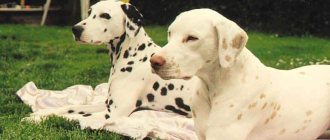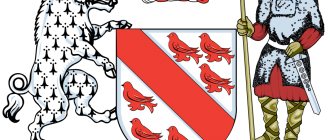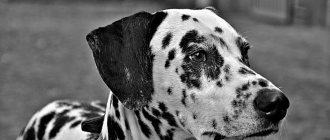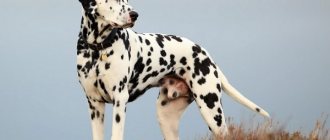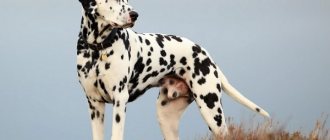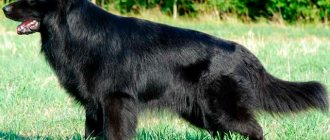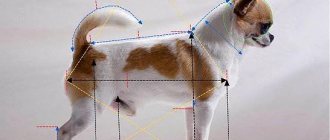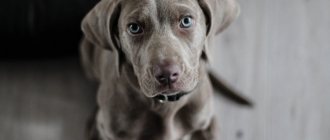Dalmatians are incredibly beautiful monochrome dogs. Their somewhat toy-like exterior and black and white coloring just begs to be painted by some artist. Not dogs, but living pictures for a children's coloring book! Are rainbow Dalmatians a beautiful coloring of the real Dalmatian breed or a coloring that exists only in our imagination? What colors are there in Dalmatian dogs? What is considered a breed standard and what is considered a breed defect? What spots are Dalmatian puppies born with? You will find answers to all these questions in our material.
Is there a breed of Rainbow Dalmatians?
What do you imagine when you hear the phrase “rainbow Dalmatians”? We won’t be mistaken if we say that you presented an incredibly beautiful, elegant dog with multi-colored spots on a white background. An incredibly beautiful sight! This is what dogs of this breed would look like if the “rainbow” color existed in nature.
Unfortunately, or fortunately, such dogs exist only in our imagination. On the one hand, it’s a little disappointing that it’s impossible to admire such beauty. On the other hand, it is very good that there are no such dogs in the Dalmatian breed. Any deviation from the generally accepted color is a breed defect that negatively affects the health of pets.
A similar breed defect, but one that actually exists, is the Longhaired Dalmatian. This is a breed mutation that may indicate the dog’s hybrid origin or the impurity of its gene pool. In some countries, such long-haired dogs are specially bred. In our country, breeding such specimens is not encouraged.
Longhaired Dalmatian
Origin theories
However, there are other theories about the Dalmatian's place of origin, supported by strong evidence.
In the epics of India, for example, you can often find a dog whose coloring is very similar to this breed. Most likely, dogs came from India to Europe along with gypsies or Roman legionnaires, and then spread throughout the world on ships where sailors took them.
It is still not known exactly from which breeds Dalmatians originated. As an assumption, a version is put forward that these dogs can be considered relatives of spotted Great Danes, Istrian Pointers or Celtic marriages.
In 1860, two dogs of this breed were brought to England from Dalmatia for an exhibition. And 30 years later, the English club developed a breed standard, although these dogs received international recognition only in the 20s of the 20th century.
Description of the Dalmatian dog breed
Contrasting spotted color and aristocratic physique are the distinctive features of the Dalmatian breed. The dog’s bright exterior will attract the eyes of others to your pet, no matter where you appear with it. The popularity of the breed is incredibly high. The film adaptation of the fairy tale novel “101 Dalmatians” by British writer Dodie Smith played a major role in popularizing the breed.
The world first saw the story of 101 puppies in the cartoon genre in 1961. Mankind had the opportunity to meet their favorite characters for the second time in 1996, when Walt Disney Studios made a live-action film based on this work. We continued our acquaintance with charming black and white dogs in the animated series, which was filmed as a continuation of the film in 1997-1998.
The Dalmatian is a big dog. This fact, combined with his graceful physique, makes him even more impressive and noticeable. The height of a male Dalmatian at the withers can reach 62 cm. The height at the withers of a female Dalmatian is slightly different - 58-60 cm. The weight of an adult Dalmatian is 25-28 kg.
Health
Dogs suffer most from deafness; this problem is the most common. Average life expectancy is from 10 to 13 years.
On average, every third dog suffers from hearing problems. Unfortunately, some Dalmatians are born completely deaf, unable to perceive any sounds; according to statistics, the percentage of births with such a defect is 12%. There is no solution to this problem at the moment. The only thing you can do is give a deafness test to a newly born puppy.
Dalmatians are vulnerable to various allergic diseases, in most cases the problem manifests itself on the skin. Problems with bladder stones may occur due to insufficient metabolism. Many of the diseases that Dalmatians carry are primarily hereditary. Therefore, if the puppy’s parents were predisposed to any diseases, most likely the puppy will also pass it on.
What colors of Dalmatians are recognized by breed standards?
When we talk about Dalmatians, we think of dogs with contrasting monochrome black and white colors. Symmetrical black spots on a pure white background are one of the breed's coat colors recognized by international standards. This is exactly what the puppies from the legendary cartoon “101 Dalmatians” looked like; this is the kind of fur coat that the villainess Cruella De Vil wanted to sew for herself.
But this is not the only color allowed by breed standards. The second one is brown-spotted. In our country, this color is not very common, but abroad such dogs are owned more often than black and white ones. Western breeders specifically select white-brown pairs to produce puppies of this color. Dalmatians with brown spots are allowed for breeding and exhibition. It differs from the black and white variety in that the size of the spots on the Dalmatian with brown spots is smaller.
Brown Dalmatians look very noble and sophisticated. They have a less contrasting coat, a softer color of spots - this invariably attracts the attention of judges at exhibitions and passers-by on the streets. To get beautiful offspring with brown spots, the parents must have well-defined pigmentation. If this condition is neglected, offspring may be born with weakened pigmentation. This can lead to breed defects.
Requirements for spots on Dalmatians:
- The main color is pure white without interspersed colored hairs.
- The spots have a clearly defined shape.
- Symmetrical arrangement throughout the dog's body.
- The preferred spot size is 2-3 cm.
- The size of the spots on the limbs and head should be slightly smaller than on the rest of the body.
- Solid spots and areas of darkened fur are not allowed.
- There should be no white hairs on the surface of the spots.
- The tail should be spotted, the size of the spots on the tail is smaller than on the body.
- The spots on the ears should be especially noticeable, but they should not be a uniform dark color.
- The color of the spots on one dog should be the same. Tricolor in any combination (white-black-brown, white-brown-red, white-brown-lemon, white-brown-orange) is not allowed.
Important: a congenital continuous spot is a disqualifying defect.
English Springer Spaniel
- Height: from 46 to 56 cm
- Weight: from 18 to 25 kg
- Life expectancy: 12 to 14 years
Agile, cheerful and always ready to play, the English Springer Spaniel is a spotted dog breed you won't want to miss. Originally from England, Springer Spaniels were bred to hunt small game, which they would chase and flush out of hiding for their owners.
And while English Springer Spaniels don't always have a completely spotted coat, they often have at least a few spots along the back, legs, face and underbelly.
In general, English Springer Spaniels are easy to train and eager to please their owners. They are energetic, cheerful and alert. English Springer Spaniels get along well with older people and other pets with proper training and socialization.
Non-standard colors of Dalmatians - uniqueness or breed defect
Black and white and brown and white are all colors allowed for the Dalmatian breed. All other color options that unscrupulous breeders try to pass off as rare and unique are breed defects. Let's talk in more detail about what non-standard colors of Dalmatians can be found.
- Bronze. Bronze spots are a fault in the breed. It appears against the background of shedding, poor nutrition, and coat diseases. This is a temporary phenomenon in both black and white and brown individuals. Loss of pigmentation causes black spots to fade and take on a rusty or hazel color, while brown spots fade to rusty brown, orange, or lemon.
- Tricolor. This is a serious disqualifying fault. It is expressed by the constant presence of spots of two colors on the body of one dog. Black and white Dalmatians may have brown, brindle, yellow or tan markings. Brown tricolor Dalmatians have additional orange and tan markings. Spots of atypical color most often appear on the dog's chest, face and limbs. The complexity of this color lies in the fact that spots of the second shade do not appear immediately, but after 2-3 months. Therefore, you can purchase a puppy without a defect mark.
- Citric. A rare color defect looks like lemon or orange spots on a white background. The color of these Dalmatians can be compared to the color of Golden Retrievers. These dogs look very beautiful, but this color is a serious disqualifying fault. It is important not to confuse the sun-bleached spots of an adult Brown Dalmatian with natural lemon spots.
- Brindle. Another beautiful breed marriage. The spots in this case have a tiger tint.
- Asphalt. A rare color, considered a disqualifying fault. In this case, the black spots, due to a pigmentation disorder, acquire an asphalt tint.
- Peach. One of the types of pigmentation disorders in brown and white dogs. The spots on the animal's body are pale brown, peach or pale orange.
- Lightened. Dogs with this color defect are found among monochrome representatives. Due to a genetic mutation, their black spots appear gray-blue. These puppies look beautiful, so breeders often inflate their prices.
Important: Brown individuals never have black pigment.
How the color of a Dalmatian is formed - genetics
Genetics is responsible for the color of a dog’s coat, namely the presence of certain genes in the father and mother of the puppy. Let's consider how the color of the offspring depends on what genes the parents have. This will help us understand that the “rainbow Dalmatian” color is impossible in nature.
So, the inheritance of non-standard colors in the Dalmatian dog breed occurs through recessive (non-dominant) genes. That is, for a puppy to develop an exotic color (not recognized by breed standards), these genes must be present in both parents.
Let's look at which genes are responsible for the color of Dalmatians:
- As – a gene that is responsible for ensuring that a dog’s spots are uniform;
- Bb – in this gene, the capital letter B denotes the dominant black color, and the small letter b denotes the recessive brown color;
- Ee - in this genome, the large E denotes the black pigment, and the small e is responsible for the recessive yellow pigment;
- at is the genome that is responsible for the “tricolor”; in order for the tricolor color to appear in the offspring, both parents must have this gene;
- sw, T, F – genes responsible for the rich color of the spots and the speckled color of the hairs.
None of these combinations can create colored "rainbow" spots on a Dalmatian's white body. This is a fact, nothing can be done about it.
Rainbow Dalmatians
